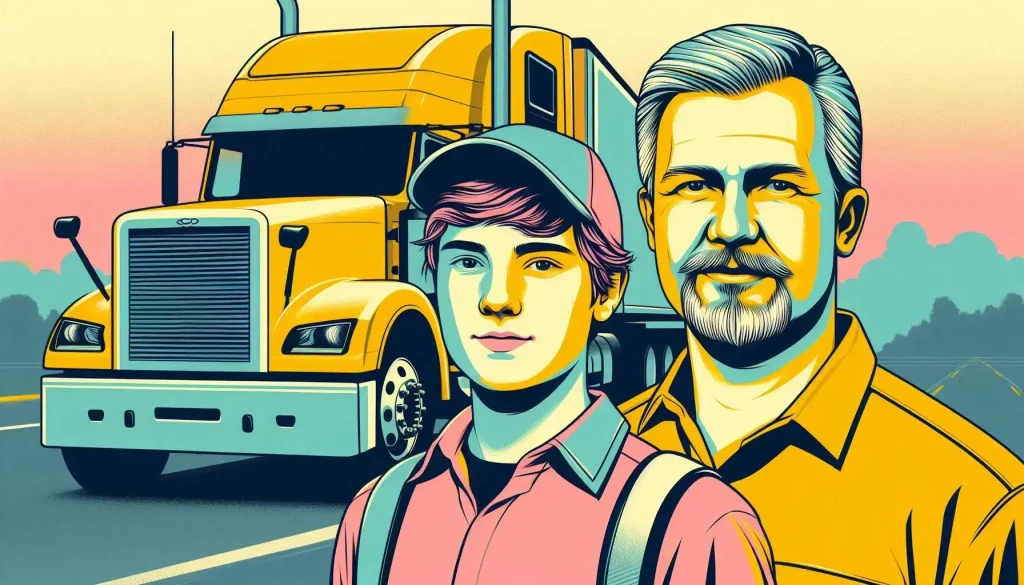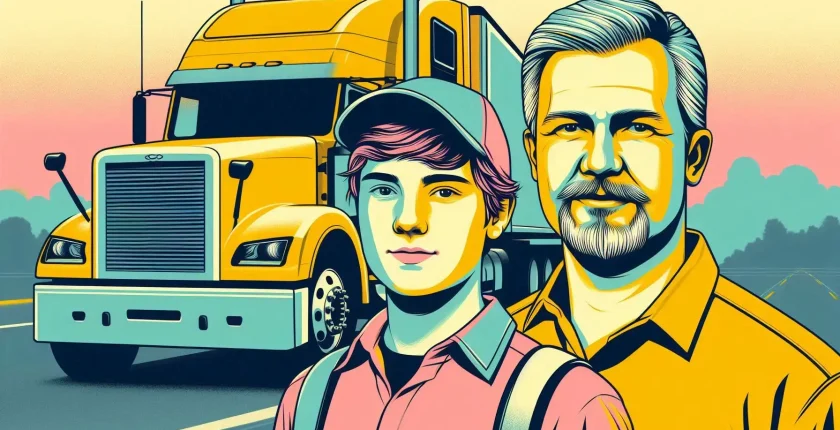CDL Training 101: Your Ultimate Guide to Earning a Commercial Driver’s License in 2025
Thinking about a career in trucking? The first step is getting your Commercial Driver’s License (CDL)—your ticket to driving big rigs, delivery trucks, or buses. CDL training might sound daunting, but it’s a straightforward process that opens doors to steady jobs and solid pay. In this guide, we’ll break down everything you need to know about CDL training in 2025: what it is, how it works, costs, timelines, and tips to ace it. Ready to roll? Let’s dive in!
What Is CDL Training?
CDL training is the hands-on and classroom education you need to earn a Commercial Driver’s License. It’s designed to teach you how to safely operate heavy vehicles—like tractor-trailers or dump trucks—and navigate the rules of the road. Whether you’re aiming for a Class A CDL (for semi-trucks) or Class B (for smaller rigs), training equips you with the skills to pass the CDL exam and hit the highway.
In 2025, trucking remains a powerhouse industry, with over 3.6 million drivers in the U.S. (ATA) and growing demand for new talent. CDL training is your launchpad to join them.
Why You Need CDL Training
You can’t just hop in a semi and start driving—federal law requires a CDL for vehicles over 26,001 pounds or those towing heavy trailers. Training ensures you’re ready for:
- Safety: Master handling a 40-ton truck in rain, snow, or traffic.
- Regulations: Learn Hours of Service rules and DOT standards.
- Job Opportunities: Companies like Schneider and UPS hire CDL holders fast.
Without it, you’re stuck on the sidelines. With it, you’re in the driver’s seat—literally.

Types of CDL Licenses: Which Training Fits You
CDL training varies by license type. Here’s the rundown:
- Class A: For tractor-trailers and combos over 26,001 pounds with a trailer over 10,000 pounds. Perfect for long-haul or OTR trucking.
- Class B: For single vehicles over 26,001 pounds (e.g., dump trucks, buses). Ideal for local or regional gigs.
- Class C: For smaller vehicles carrying hazardous materials or 16+ passengers (e.g., hazmat vans).
Most newbies start with Class A—it’s the most versatile. Add endorsements like Hazmat or Tanker later to boost your pay. Check out CDL license details for more.
What to Expect in CDL Training
CDL training blends classroom learning with behind-the-wheel practice. Here’s what’s on the agenda:
Classroom Basics
- Rules of the Road: Traffic laws, weight limits, and logbook basics.
- Safety Protocols: Pre-trip inspections, emergency maneuvers, and load securing.
- Test Prep: Study for the written CDL permit test (50-60 questions, depending on your state).
Hands-On Driving
- Backing Up: Nail parallel parking a 53-foot trailer—a must for the skills test.
- Shifting Gears: Master 10-speed manuals (though automatics are gaining traction in 2025).
- Road Practice: Tackle highways, city streets, and tight turns with an instructor.
Programs typically run 3-8 weeks, depending on full-time or part-time schedules. By the end, you’ll be ready to ace the DMV’s three-part CDL exam: written, skills, and road test.
How Much Does CDL Training Cost in 2025?
Let’s talk numbers. CDL training isn’t cheap, but it’s an investment with quick returns. Here’s the breakdown:
- Private Schools: $4,000-$8,000 for a full Class A course. Includes truck use and test prep.
- Community Colleges: $2,500-$5,000—often cheaper but slower-paced.
- Company-Sponsored: Free or low-cost (e.g., $200 upfront), but you’ll sign a contract to drive for them (e.g., Swift, CRST).
Extras like permit fees ($50-$150) or endorsements ($100-$200 each) might bump it up. Good news? Trucking jobs pay $50,000-$75,000 for newbies (ZipRecruiter), so you’ll recoup costs fast.
[Image Placeholder: “CDL instructor guiding a student”]
Alt Text: CDL training instructor coaching a student on a practice range.
Where to Get CDL Training
You’ve got options in 2025:
- Private Trucking Schools: Fast, intensive programs with high pass rates (e.g., Roadmaster, Premier Truck Driving School).
- Community Colleges: Affordable and thorough, often with financial aid (e.g., Dallas College).
- Employer Programs: Free training from big carriers—just commit to a year or two of work.
Search CDL training near me to find local spots. Pro tip: Visit schools, test their trucks, and ask about job placement rates.
How Long Does CDL Training Take?
Timing depends on your schedule:
- Full-Time: 3-5 weeks, 5 days a week, 6-8 hours daily.
- Part-Time: 6-10 weeks, nights or weekends—great if you’re working another job.
After training, you’ll take the CDL test within days. Pass it, and you’re licensed—some grads land jobs the same week!
Tips to Excel in CDL Training
Want to crush it? Here’s how:
- Study Early: Grab a CDL manual from your DMV and memorize key rules before day one.
- Practice Patience: Backing a trailer takes time—don’t sweat early fumbles.
- Ask Questions: Instructors are there to help; clarify anything tricky.
- Simulate the Test: Run pre-trip inspections and maneuvers until they’re second nature.
- Stay Healthy: Rest up—long days behind the wheel need focus.
Nail the skills test (backing, alley docking, road driving), and you’re golden.
The Payoff: Why CDL Training Is Worth It
In 2025, a CDL unlocks serious perks:
- Earnings: Start at $50,000-$75,000; hit $90,000+ with experience (BLS.gov).
- Stability: Trucking demand’s up, with e-commerce fueling growth.
- Flexibility: Choose OTR, regional, or local gigs to fit your life.
New drivers often pay off training in 6-12 months, then bank the rest. Curious about jobs? Explore trucking careers.
CDL Training FAQs
Do I need experience to start CDL training?
Nope! Most programs take beginners—just bring a clean driving record and a willingness to learn.
Can I get financial aid?
Yes—grants, loans, or company sponsorships can cut costs. Ask schools about options.
What if I fail the CDL test?
Retake it! Most states allow multiple attempts (fees apply). Extra practice usually seals the deal.
How old do I have to be?
21 for interstate driving; 18 for in-state (Class B or C).
Kickstart Your Trucking Journey in 2025
CDL training isn’t just a course—it’s your gateway to a career that pays well and keeps America moving. With the right program, a little grit, and a lot of practice, you’ll be hauling freight in no time. Ready to get started? Find top CDL schools or dive into industry trends for more inspiration.
The road’s waiting—shift into gear and go!
